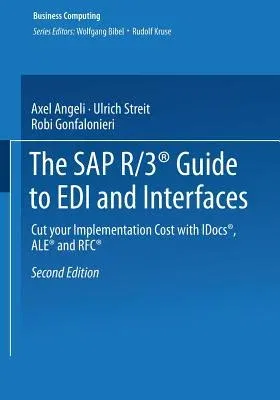This book is for both developer and decision makers of R/3
implementation teams who need to understand in-depth and practically the
benefits, financial risks and technical backgrounds of IDocs and ALE in
interface development. It describes the implementation of interfaces in
an R/3 roll-out, imporatnt technologies such as RFC, OLE and Workflow
and common standards like EDIFACT, ANSI X.12 or XML. A large number of
recipes deliver templates as a starting point for own enhancements. It
is for everybody who depends on fast and cost-effective solutions for
EDI and it also discusses why many EDI projects are ten times as
expensive as they could be.
Preparing the reader with the essential knowledge to survive the
outrageously fast growing world of data communication and ecommerce via
internet and intranet, the book shows in a destilled manner how
enterprises using R/3 can efficiently implement Electronic Data
Interchange (EDI) both with external partner and with inhouse satellite
systems.
This book in the tradition of IT-cookbooks, where the reader will find
quick recipes and reliable information to cover all aspects of SAP
Interfacing and quickly became a standard work for the R/3 world
Das Buch hilft, in Unternehmen, die SAP einsetzen, Electronic Data
Interchange (EDI) so effizient und optimal wie möglich zu
implementieren. Ziel ist es, hierdurch Geschäftsprozesse inhouse, aber
auch mit Geschäftspartnern via Intranet/Internet (Beispiel Electronic
Commerce) zwischen verschiedenen Rechnern reibungsfrei ablaufen zu
lassen. (Stimmt das, kann man auch Intranet, Internet nennen? Für den
Verkauf bei der gegenwärtigen Diskussion um SAP wichtig, aber gibt das
Buch das inhaltlich her? Bitte beurteilen Sie... Danke.) Das Buch wendet
sich sowohl an Entscheidungsträger und Projektleiter, die an einer
kosten- und zeitminimierenden Implementierung von SAP R/3 interessiert
sind, wie auch an Entwickler und IT-Professionals, die übersichtlich


